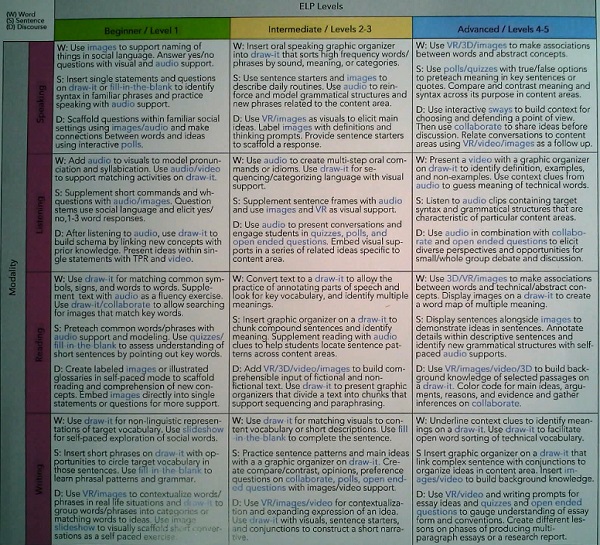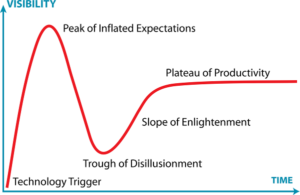 Something may be percolating in educational circles. A development of special interest to me, something I call the impending AR/MR/VR rigor movement, could be on the rise. In a previous article, I wrote,
Something may be percolating in educational circles. A development of special interest to me, something I call the impending AR/MR/VR rigor movement, could be on the rise. In a previous article, I wrote,
“The clouds are gathering; the weather is leaning toward a change—VR must be used more effectively in schools and universities if it is to survive the long haul. Educational rigor must replace the ‘wow’ factor, and it must happen very soon. Raising the ‘quality’ ante for effective VR use [is what I’m referring to].”
Considering the well-traveled Gartner hype cycle, one wonders whether momentum is building for educational VR in the hopes of pushing its use towards the hallowed “slope of enlightenment” and onwards to a “plateau of productivity”, at least in educational settings. In this role, virtual-reality becomes a technology worth employing in actual classrooms to resolve specific and recurring educational challenges. At this juncture, it becomes something not just for fun; not for mere exploration; or not to promote technology for its own sake. No, at this point virtual reality becomes something worth doing because it offers educators some sort of tangible return on investment (ROI).
At recent ed-tech conferences (FETC and SXSWedu), I identified some unmistakable whispers in this regard. Educators are beginning to focus on meaningful and impactful uses of virtual reality, such as a rubric recently introduced by Nearpod, one which identifies specific skill boosting strategies for the role of virtual reality in classroom instruction. (See chart below.)

This chart brought to mind the work of Dr. Marybeth Green, Associate Professor of Instructional Technology and Graduate Coordinator for the Instructional Technology Program at Texas A&M University-Kingsville, who suggested
“Not only should we define metacognitive strategies for kids…, we should also define ways in which teachers can make use of the affordances of [AR/VR]”.
Let’s clarify: here are some examples (excerpted or paraphrased from the Nearpod rubric) of very specific instructional strategies that leverage the use of VR in the ESL (English as a second language) classroom. In ESL, we can use use VR:
- as a visual stimulus to elicit main ideas
- to make associations between words and abstract concepts
- to build background knowledge of selected passages in readings
- to house words/phrases/vocabulary in real life situations
- to contextualize and expand the expression of an idea
- as a writing prompt for essays and open-ended assessment questions
- as a reference point for definitions and a launch point for thinking problems (if appropriately labeled and highlighted within the VR environment)
Let me say this as clearly as possible: once educators start to develop a concrete set of strategies for using virtual reality, once they know both the how and when for using these same strategies, virtual reality will be well on its way to the venerated “plateau of productivity”. And not before that. –Len Scrogan

